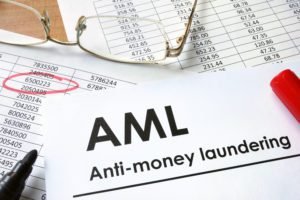Money laundering remains one of the global financial issues even today. With the evolution in the schemes of disguising illegal money, criminals devise new plans now and then while financial institutions and regulating bodies cannot be kept dormant. Suspicious transactions of finance and the understanding of the whole investigation process regarding money laundry activities can only prohibit criminal enterprises from penetrating legitimate economies. The alert system in investigating money laundry requires understanding the best practice procedure for tackling alerts as discussed below:
Moreover, for those looking forward to building a career in financial compliance, specialized courses in investment banking provide them with the skill set to perform an essential function in managing and monitoring financial transactions. For example, Imarticus Learning offers a Certified Investment Banking Operations Professional (CIBOP™) program to prepare participants for AML operations, risk management, and transaction monitoring in an investment bank.
Knowledge of Money Laundering
Money laundering refers to the process where illegally obtained money is made to appear as if it was earned legally. A financial crime may be involved in several steps and methods, primarily classified into three stages:
- Placement: This refers to introducing illegal funds into the financial system.
- Layering: Complex transactions that help to obfuscate the origins of the money.
- Integration: Reintroducing the “cleaned” money into the economy using legitimate transactions.
Financial institutions are the first lines to detect and prevent money laundering. Let’s talk more about the process of investigating money laundering and the measures necessary to take adequate responses to such threats.
Importance of Money Laundering Alerts
These serve as early warning signals when suspicious activities are possible. When transactions or behaviours tend to deviate from any customer’s financial activity pattern, it creates an alarm for further investigation. Many of these alerts result from transaction monitoring systems that track customer behaviour, highlighting possible anomalies based on predefined parameters.
However, the alert may not be a definitive sign of money laundering. It sets off an entire process of money laundering investigation, whereby one collects information, validates the risks, and then determines whether further action is warranted.
How to Identify Money Laundering Alerts
Money laundering alerts can be identified by monitoring suspicious activities due to specific indicators or even “red flags.” Those include:
- Large deals or deposits without clear-cut business justification.
- Transfers or multiple transfers between accounts, often in a very short duration
- Transactions not aligned with the known business profile of the customer
- Shell companies and offshore accounts are used in fund movement
- Incoherent or false information about account setup or KYC.
Banks and other financial service providers rely on suspicious activity monitoring software to automate the detection of red flags. However, trained personnel are still required to identify the meaning of the alerts they receive and what should follow.
Money Laundering Investigation Process: Step By Step
The money laundering investigation process is complex and needs several steps to ensure that there is no potential threat, and this is broken down step by step into the vital stages below:
Alert Generation And Review
Once an alert is raised due to suspicious transactions, it flags it. The compliance officers analyze the alert to determine whether the transaction needs to be investigated further. Pre-review is essential to sort out only the actual cases.
Data Collection
After an alert is raised, the next step is gathering information about the transaction. This can take the form of an account history review, an assessment of the customer’s financial background, or an analysis of past transactional behaviour.
Risk Evaluation
The financial institution then determines the alert’s risk level. Suspicious financial transactions may also be detected by scoring them according to predetermined risk parameters such as the amount involved, the customer’s risk profile, and the nature of the transaction.
Escalation and In-depth Investigation
If the risk assessment indicates a high possibility of money laundering, the case is escalated for further investigation. This would involve interviewing customers, studying business activities, and collaborating with law enforcement agencies as and when necessary.
Documentation and Reporting
All investigation steps must be documented. Money laundering is suspected if the institution files a SAR with the relevant authorities detailing the findings and evidence gathered during the investigation.
Best Practices for Detecting Suspicious Financial Transactions
Detecting suspicious financial transactions requires a blend of technology and human expertise. Here are some best practices:
Advanced Transaction Monitoring Software: This software can better identify transactions that probably represent money laundering. Such systems, following machine learning algorithms, enhance their precision with time.
Periodic Staff Training: The employees in charge of transaction monitoring must be periodically trained to update their knowledge about the latest lacing tactics and trace anomalies.
Customer Due Diligence (CDD) and Enhanced Due Diligence (EDD): Proper CDD and EDD procedures will enable the early identification of high-risk customers and minimize the opportunity for money laundering.
KYC in Detection of Money Laundering
Know Your Customer (KYC) rules are significant in preventing money laundering. Collecting and verifying information about a customer helps a financial institution understand the client’s profile and detect any suspicious activity.
Improved Customer Profiling: KYC information can now be used to build quite elaborate customer profiles. Banks can establish the proper risk levels from such profiles against each account.
Ongoing Monitoring: KYC does not stop at this level. Financial institutions need to refresh customer information periodically or in high-risk accounts because it is through this change that a financial institution is likely to notice behavioural alterations which may indicate money laundering.
Utilizing the CIBOP™ Program AML and Transaction Monitoring Skill
Imarticus Learning’s CIBOP™ program is one of the comprehensive investment banking courses for finance graduates, which comes with the necessary skills for managing money laundering alerts.
Overview
85% placement rate makes CIBOP™ offer excellent job opportunities to participants with 100% job assurance. It ensured seven interviews with assistance in preparation for interviews and the development of profiles. A wide range of Curricula Is Available, Ranging from financial market intermediaries and macroeconomic factors to transaction monitoring and knowing your customer. These are highly sought in today’s market, where there are alerts of money laundering and their eventual prevention and stopping of fraudulent practices.
Tools and Technology Involved in Money Laundering Investigation
Money laundering investigations involve technology. Following is a set of common tools that get involved in this whole process:
Transaction Monitoring Systems: These monitor for anomalies in the monetary transaction flow of banks.
Analytics Tools: These tools allow large amounts of data to be gazed upon, and suspicious trends and patterns indicating money laundering can be targeted.
AI and ML: These can be used as the base to improve AML as AI can track patterns, which may even avoid the eye of a sophisticated professional through ML.
Career Opportunities
Today, with the rising significance of AML compliance, career opportunities in this space are opening up. Graduates from CIBOP™ can be placed in roles like:
- Investment Banking Associate
- KYC Analyst
- Trade Surveillance Analyst
- Transaction Monitoring Officer
Money laundering is detected with suspicious financial transactions; thus, ensuring regulatory compliance is critical through these jobs.
Why CIBOP™ Program?
A comprehensive, strong foundation in investment banking operations and AML procedures will be focused on those areas of the program, including financial systems, wealth and asset management, monitoring, and reporting. Some of the key highlights of the program are:
- Job-Ready Training: Experts will prepare participants with a hands-on curriculum that prepares them to start in the field.
- Placement Support: This course assures employment and provides interview preparations, elevating the participants’ prospects of securing good-paying jobs.
This course equips students with the knowledge and skills to succeed in the profession of monitoring and preventing money laundering in a financial institution.
Conclusion
Indeed, as financial crimes increase in complexity, the requirement for having a robust AML strategy and knowledgeable professionals assumes great importance. Understanding from alert identification to thorough investigations helps maintain financial integrity by ensuring money laundering has minimal scope for occurrence. Such financial institutions can strengthen their defences against money laundering by leveraging training programs like the CIBOP and using advanced tools.
Whether one wishes to become a compliance officer or any finance professional, understanding the methods of detecting money laundering alerts and hence helping diminish risk exposure in modern finance is worth it.
FAQ’s
What is the final objective of the money laundering investigation process?
The primary goal of the money laundering investigation process is to identify, assess, and mitigate suspicious financial activities that may involve illegal funds. In this respect, a structured process helps financial institutions prevent criminals from integrating illicit money into the legitimate financial system.
How can I identify money laundering alerts in financial transactions?
Generally, money laundering alerts are triggered when a transaction is out of a customer’s regular activity pattern. Some common red flags include unusually large transfers, frequent international transactions, and inconsistent account information. Advanced monitoring systems and compliance teams help financial institutions detect such alerts accurately.
What career opportunities are available for someone skilled in money laundering detection?
Any of the following professional roles that trained AML and transaction monitoring professionals can assume are KYC Analyst, Transaction Monitoring Officer, Trade Surveillance Analyst, or Risk Management Consultant. For example, the CIBOP™ program ensures that those in attendance possess the skills and industry experience required for success in such a position.


 Money laundering is a word that refers to the practice of converting cash obtained through criminal activities into legitimate and clean funds. This article will look at three broad stages and measures to prevent money laundering.
Money laundering is a word that refers to the practice of converting cash obtained through criminal activities into legitimate and clean funds. This article will look at three broad stages and measures to prevent money laundering.